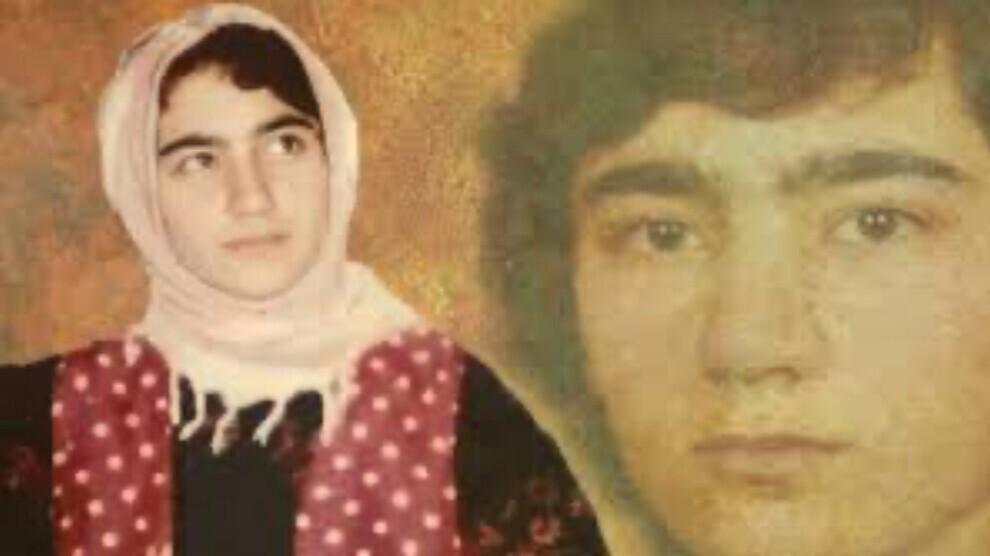Kevana Zerin: Hozan Mizgîn became the voice of her people through art and struggle
The Kevana Zerin Committee paid tribute to martyr Hozan Mizgîn, saying that "through her art and struggle, she became the voice of her people ."
The Kevana Zerin Committee paid tribute to martyr Hozan Mizgîn, saying that "through her art and struggle, she became the voice of her people ."

The Kevana Zerin Cultural and Art Movement Committee paid tribute to artist and guerrilla Hozan Mizgîn (Gurbet Aydın), who fell as a martyr in Tatvan on 11 May 1992.
The statement said that 11 May is a day to commemorate the martyrs of culture and art in the freedom struggle, in the person of Hozan Mizgîn.
The statement said: "To remember the martyrs is our most meaningful and most valuable duty, because their resistance carried us to this day. With the strength they passed on, we believe in reaching a hopeful future. With this awareness, we remember the 33rd anniversary of the martyrdom of Hozan Mizgîn, the symbolic figure of the freedom struggle. An artist and a brave woman. We pay tribute to her with great love, respect, and loyalty. On this meaningful day, while we commemorate our martyrs with love, respect, and morale, we once again vow to fight for the values for which they gave their lives."
Hozan Mizgîn’s relentless struggle began during a time and in places marked by heavy suffering. Born in 1962 in the village of Bilêder in Batman, her family named her Gurbet, symbolizing the hardship of exile, the suffering of the people, and the pain inflicted on women by the patriarchal mindset. A pivotal conversation with martyr Mazlum Doğan changed her life. Afterward, she changed her name to Mizgîn and became the first woman to join the resistance ranks in her region. She completed her training in the Beka camp, participated in the third congress, and was appointed along with martyr Hozan Sefkan to organize artistic activities in Europe. She was also a pioneer in the women’s movement, organizing the first conference of YJWK and amplifying the voice of the free woman. She played a key role in the founding of Huner-Kom and the Koma Berxwedan music group alongside Hozan Sefkan."
Suicide action to avoid being captured
The committee emphasized that Mizgîn’s songs brought hope, strength, and morale to the Kurdish people, while making her a significant threat to the enemy.
The statement added: "With 'Lo Hevalno', she expressed her longing for comrades; 'Gundîno Hewar' voiced the people's rawest cry; 'Newroz' celebrated the spirit of resistance; and 'Çemê Hêzil' conveyed the sorrow for her comrades. As a revolutionary, Hozan Mizgîn was always ready for any revolutionary duty. She served as a member of the regional command in the Mardin region and later assumed full responsibility for the Xerzan region. While on duty in Tatvan, she was surrounded by enemy forces. Engaged in fierce combat, she resisted valiantly and ultimately carried out a self-sacrificial action to avoid falling into enemy hands, joining the caravan of martyrs."
The statement continued: "Hozan Mizgîn became the voice of her people, a revolutionary, and an eternal artist. From the very beginning of the Freedom Movement, she best represented the resistance shaped by art under the leadership of Rêber Apo [AbÖullah Öcalan]. With a deep love for her people, she fulfilled her historical duty without hesitation. On the 33rd anniversary of her martyrdom, as the Kevana Zerin Cultural and Art Movement, and on behalf of all artists who continue the struggle through art, we once again vow to uphold the legacy of Hozan Mizgîn. Because being an artist is a responsibility, a stance, and an honor. This stance has been seen in Imralı, in the mountains, in all arenas of struggle, and most recently at the Tishrin Dam. Our martyrs of culture and art have left us this truth as a duty. In the person of comrade Hozan Mizgîn, we once again remember all the martyrs of the revolution with respect and gratitude."